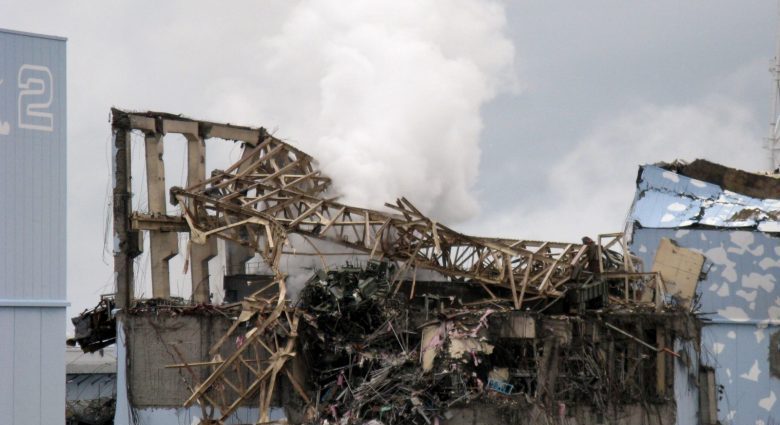The urgent global need to meet climate ambitions, growing uncertainty about securing vital energy resources due to the ongoing Russia–Ukraine conflict and the inability of renewable resources to meet exponentially rising energy demand is bringing momentum back to the nuclear energy debate.
Some argue that a zero-carbon future will remain an unattainable dream if nuclear energy is not used to fight the ill effects of global warming. While this contention continues to be debated, a recent report by the International Energy Agency suggests that nuclear energy is set to make a comeback and witness a doubling of capacity between 2020–2050.
The situation is particularly acute for Japan. With a relatively low share of national energy resources, it has relied on imports of coal, oil and natural gas to meet its energy needs.
It is no surprise then that Japan has been one of the foremost countries to have expanded its nuclear power plant fleet to ensure energy self-sufficiency. Japan’s 2010 Strategic Energy Plan aimed to expand the share of nuclear energy — otherwise known as its ‘dream energy’ — to meet half of its electricity demand by 2030.
But the aftermath of the Fukushima nuclear disaster in 2011 led to the dramatic reversal of these plans to the extent that a complete nuclear phase-out was considered. While the vision for the phase-out was set aside upon the Liberal Democratic Party’s return to power, Japan’s nuclear energy policy has lacked clarity in meeting its set targets.
A share of 20–22% of nuclear energy is envisioned in the latest draft of the Strategic Energy Plan in 2022. While this target has remained the same since the 2014 Strategic Energy Plan, the process of attaining it is still unclear.
As of June 2022, only ten out of Japan’s 54 nuclear reactors have been given the go-ahead to restart, while just four are currently in operation and 21 have been decommissioned.

Japanese Prime Minister Fumio Kishida has repeatedly reiterated the need to restart more plants and the crucial role that nuclear energy plays in Japan’s security and stability, announcing that up to nine reactors would be in operation by the end of 2022.
With liquefied natural gas prices in Japan reaching historic highs and Japan’s continued resolve to include nuclear energy, it is time to look into establishing a substantive Japanese nuclear energy policy.
Whether Japan will make a full-fledged return to the league of major nuclear-powered countries is yet to be seen, but it seems unlikely. For continued reliance on nuclear energy, Japan will have to extend not only the reactor lifespan beyond the stipulated 60 years — a move that might rekindle public fears and opposition — but also construct new plants, which could take a decade.
This will be ineffective in meeting short-term energy requirements that the nation is struggling with, while also leaving Japan behind in the global green race with implications for its 2050 net zero climate vision.
Other barriers to expanding nuclear energy involve overcoming local opposition, lawsuits against restarts, delayed assessments and excessive safety goals stipulated by the Nuclear Regulation Authority. Cost overruns of nuclear projects, nuclear waste management, and the political and societal implications of nuclear disasters also pose challenges.
Yet Hiroshi Kajiyama, Japan’s former minister of Economy, Trade and Industry, has called nuclear energy ‘indispensable’ for Japan.
Kishida’s New Capitalism — which focuses on inclusivity, sustainability and touts green innovation as an area that would benefit from enhanced government research and development investment — could incentivize the development of related nuclear technologies such as Finnish Onkalo nuclear spent fuel repository technology and Small Modular Reactors.
Under the shadow of the Fukushima nuclear disaster, a transparent account of the government’s nuclear policy could help both the nuclear industry and the public. But Japan must have a clear idea of how to manage its existing nuclear power capacity given the precarious geopolitical energy climate.
With rising fuel prices and a weak yen, Japan is in the midst of the most serious energy crisis the country has ever faced.
The ambiguity that shrouds the future of nuclear energy serves no good to Japan, domestically or internationally. A clear policy vision articulating how the existing hurdles will be overcome is essential for continuing investment to ensure a stable power supply and for insulating the sector from any unforeseen political instability at the leadership level.

Nuclear energy is not the one-stop solution Japan is hoping for. Tokyo will have to make continued progress in renewables and other technologies such as hydrogen, carbon capture, energy utilization and storage (CCUS).
But with the government consistently including nuclear energy in its Strategic Energy Plan, it would be prudent to highlight how the desired targets are to be achieved by 2030.
A clear nuclear energy vision will help stakeholders in the energy industry gain a better sense of the Japanese nuclear industry’s direction so that they can prepare for the resulting implications rather than second guessing whether the government will be able to put talk into action.
Parul Bakshi is a Doctoral Candidate at the Jawaharlal Nehru University, India and previously a Special Research Student and Japan Foundation Fellow at the University of Tokyo, Japan. She is the co-editor of India-Japan Relations @70: Building Beyond the Bilateral (2022).
This article was first published by East Asia Forum, which is based out of the Crawford School of Public Policy within the College of Asia and the Pacific at the Australian National University. It is republished under a Creative Commons license.

